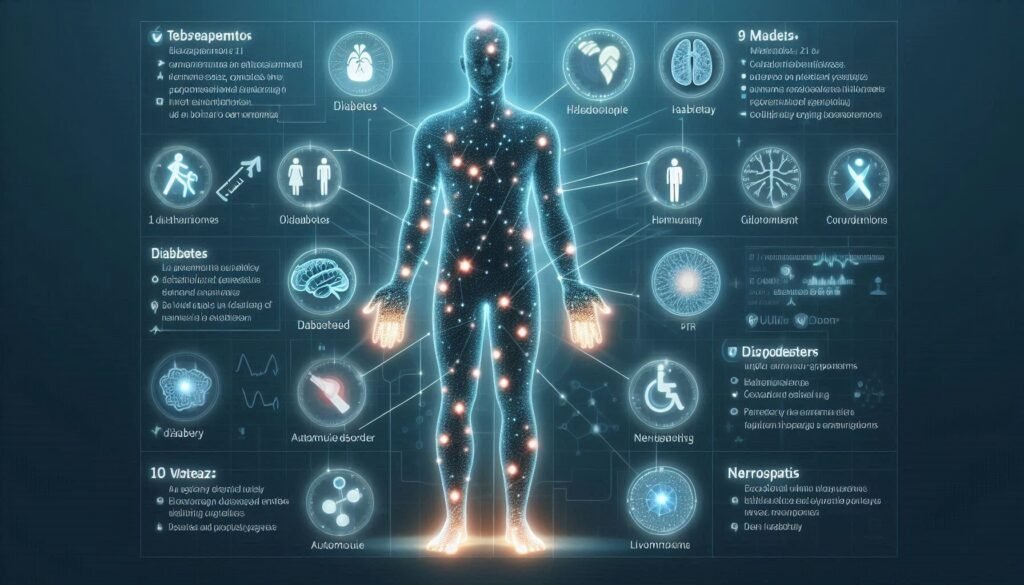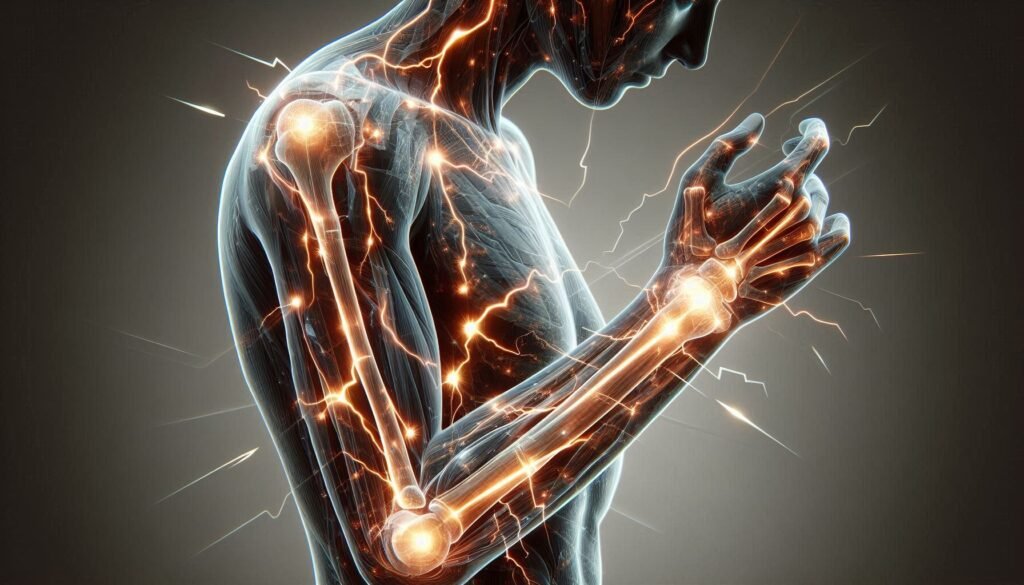Paresthesia, the tingling or prickling sensation often felt in the extremities, can be more than just an annoying feeling. For many people, it’s a signal from their body that something else is wrong. Understanding what causes this strange sensation can not only help identify underlying health issues but also guide you toward effective treatment options.
In this article, we will explore the top 10 medical conditions that can cause paresthesia. From common ailments like diabetes to less known autoimmune diseases such as Guillain-Barré syndrome, each condition has its own unique impact on nerve function and overall health. Join us as we uncover these medical mysteries and shed light on how they contribute to those unsettling tingles and numbness so many experience today.

Understanding Paresthesia: A Brief Overview
Paresthesia refers to unusual sensations in the skin, including tingling, prickling, or a feeling of numbness. It often occurs in the arms, hands, legs, or feet but can affect other areas as well. This phenomenon may be temporary or chronic and can vary significantly in intensity.
The sensation usually arises when nerves are compressed or irritated. For instance, sitting too long with your leg crossed might cause a temporary case of “pins and needles.” While many people experience paresthesia at some point in their lives without any underlying issues, persistent symptoms could signal an underlying medical condition.
Factors such as pressure on nerves from injury or repetitive motion can lead to these sensations. Additionally, certain environmental factors like cold temperatures may also contribute to paresthesia episodes by affecting nerve response.
Understanding paresthesia is crucial for recognizing potential health problems. Being aware of its various causes aids individuals in seeking appropriate medical advice when necessary.
Diabetes Mellitus: The Leading Cause of Paresthesia
Diabetes mellitus is a chronic condition that affects millions worldwide. One of its most common complications is neuropathy, which can lead to paresthesia. This tingling or numb sensation often occurs in the hands and feet, impacting daily life.
High blood sugar levels damage nerves over time, disrupting normal function. As glucose builds up in the bloodstream, it creates an environment where nerve fibers become vulnerable to injury. This process can result in neuropathic pain and altered sensations.
Patients with diabetes must manage their blood sugar levels effectively to minimize these risks. Regular monitoring and medication adherence are crucial strategies for preventing nerve damage. Lifestyle changes such as diet and exercise also play important roles.
If you experience unexplained tingling or numbness, it’s essential to consult a healthcare professional promptly. Early detection allows for timely interventions that can improve overall quality of life while addressing diabetes-related complications like paresthesia.
Multiple Sclerosis and Its Impact on Nerve Function
Multiple sclerosis (MS) is a chronic disease that primarily affects the central nervous system. It occurs when the immune system mistakenly attacks the protective covering of nerves, known as myelin. This damage disrupts communication between the brain and other parts of the body.
Individuals with MS often experience various neurological symptoms, including paresthesia. Tingling or numbness in limbs can occur due to lesions forming on nerve pathways. These sensations may fluctuate, making them unpredictable for those affected.
The severity and type of symptoms vary widely from person to person. Some may find their paresthesia mild and manageable, while others could face significant discomfort or disability.
Understanding how MS impacts nerve function is essential for effective management strategies. Early diagnosis can lead to better treatment options and improved quality of life for patients dealing with this complex condition.
Carpal Tunnel Syndrome: Compression Neuropathy and Paresthesia
Carpal Tunnel Syndrome (CTS) is a common condition caused by compression of the median nerve in the wrist. This nerve controls sensation and movement in parts of the hand, making its health crucial for everyday activities. When pressure builds up within the carpal tunnel, tingling or numbness can occur in the fingers and palm.
This syndrome often stems from repetitive hand movements or prolonged wrist flexion, typical in jobs involving typing or assembly work. As these actions continue over time, they can lead to inflammation around tendons that further compress the median nerve.
Symptoms typically manifest as paresthesia, which may feel like a pins-and-needles sensation. It might also present with weakness when gripping objects or performing tasks that require fine motor skills.
Early recognition is essential to prevent long-term damage. Conservative treatments include splinting, physical therapy, and lifestyle modifications aimed at reducing strain on the wrist. In severe cases, surgical intervention may be necessary to relieve pressure on the median nerve.
Vitamin B12 Deficiency: A Hidden Culprit of Tingling Sensations
Vitamin B12 deficiency is often overlooked as a cause of paresthesia, yet it plays a crucial role in nerve health. This essential vitamin is vital for the production of myelin, the protective sheath surrounding nerves. Without adequate levels, nerves may become damaged or dysfunctional.
Symptoms of Vitamin B12 deficiency can include tingling sensations in the hands and feet. Individuals may also experience numbness or a “pins and needles” feeling that affects their daily activities. These symptoms can sometimes be mistaken for other conditions.
Causes of this deficiency vary widely, ranging from dietary issues to absorption problems. Vegetarians and vegans are particularly at risk since natural sources primarily come from animal products. Additionally, certain gastrointestinal disorders can impair nutrient absorption.
Treatment typically involves dietary adjustments or supplementation under medical supervision. Addressing Vitamin B12 levels not only helps alleviate paresthesia but also supports overall neurological function and energy metabolism.
Peripheral Neuropathy: Various Causes and Paresthesia Symptoms
Peripheral neuropathy refers to damage to the peripheral nerves, which transmit signals between the brain and spinal cord and the rest of the body. This condition can arise from numerous causes, making it a complex diagnosis. Common factors include diabetes, infections, trauma, toxins, and certain medications.
Symptoms of peripheral neuropathy often begin with tingling or numbness in the extremities. Many people experience sharp pain or sensitivity to touch that can be debilitating. These sensations may spread over time if not addressed properly.
In addition to physical symptoms, individuals might also face challenges like muscle weakness and coordination issues. The impact on daily activities can be significant as tasks become increasingly difficult due to nerve dysfunction.
Managing peripheral neuropathy typically involves addressing its underlying cause while alleviating symptoms through medication or lifestyle changes. Early intervention is crucial for improving quality of life and preventing further nerve damage.
Herniated Discs and Spinal Stenosis: Back Problems Leading to Paresthesia
Herniated discs and spinal stenosis are common back problems that can lead to paresthesia. A herniated disc occurs when the soft material inside a spinal disc bulges out, pressing on nearby nerves. This pressure often results in tingling sensations or numbness, particularly in the arms or legs.
Spinal stenosis involves narrowing of the spinal canal, which can compress the spinal cord and nerve roots. This condition frequently causes pain as well as sensory disturbances like paresthesia. It often affects older adults but can occur at any age due to injury or degenerative changes.
Symptoms may vary widely from one person to another. Some individuals experience mild tingling, while others suffer from severe discomfort and loss of function in affected areas. Treatment options include physical therapy, medications, and sometimes surgery depending on severity.
Awareness of these conditions is vital for timely diagnosis and effective management of symptoms associated with paresthesia related to back issues.
Stroke and Transient Ischemic Attacks: Neurological Causes of Paresthesia
Stroke and transient ischemic attacks (TIAs) are serious medical events that can lead to various neurological symptoms, including paresthesia. A stroke occurs when blood flow to the brain is interrupted, resulting in damage to the affected area. This disruption can cause tingling sensations or numbness, often felt on one side of the body.
Transient ischemic attacks are sometimes referred to as “mini-strokes.” They cause similar symptoms but last for a shorter duration—typically less than 24 hours. TIAs serve as critical warning signs of potential future strokes and should never be ignored.
Paresthesia from these conditions may manifest suddenly and unpredictably. Individuals might experience unusual feelings in their arms, legs, face, or other areas depending on which part of the brain is affected. Recognizing these symptoms quickly is vital for effective intervention.
Timely medical attention can significantly improve outcomes following a stroke or TIA. Early diagnosis and treatment aim not only at alleviating current symptoms like paresthesia but also preventing further complications.
Guillain-Barré Syndrome: An Autoimmune Condition Affecting Nerves
Guillain-Barré Syndrome (GBS) is a rare autoimmune disorder where the immune system mistakenly attacks peripheral nerves. This condition often follows an infection, such as a respiratory or gastrointestinal virus. The exact trigger can vary, but GBS typically manifests after the body has fought off these illnesses.
One of the hallmark symptoms of Guillain-Barré Syndrome is paresthesia. Patients often experience tingling sensations in their extremities, which may progress to muscle weakness or paralysis. These symptoms can escalate rapidly over days or weeks, making early diagnosis crucial.
The underlying mechanism involves damage to the myelin sheath that protects nerve fibers. As this protective layer deteriorates, communication between nerves and muscles becomes impaired. Consequently, individuals may struggle with basic movements like walking or even breathing.
Treatment options include immunotherapy and rehabilitation therapies aimed at restoring function and alleviating discomfort. Most patients make significant recoveries over time; however, some may experience lingering effects from the syndrome long after initial symptoms have resolved.
Hypothyroidism: How Thyroid Imbalance Can Cause Paresthesia
Hypothyroidism is a condition characterized by an underactive thyroid gland, which leads to insufficient production of thyroid hormones. These hormones play a crucial role in regulating metabolism and energy levels. When the body lacks these essential hormones, it can affect various bodily functions, including nerve health.
Individuals with hypothyroidism may experience a range of symptoms, including fatigue, weight gain, and depression. One less recognized symptom is paresthesia. The imbalance in hormone levels can result in slowed nerve conduction or even damage to peripheral nerves. This disruption manifests as tingling sensations or numbness commonly felt in the hands and feet.
Moreover, untreated hypothyroidism can lead to other complications that exacerbate neurological issues. For instance, fluid retention associated with this condition might increase pressure on nerves, further contributing to those unsettling feelings of pins and needles.
Recognizing the link between hypothyroidism and paresthesia is vital for effective treatment. If you suspect your thyroid function could be impacting your nerve sensation or overall well-being, seeking medical advice is important for proper diagnosis and management strategies.


